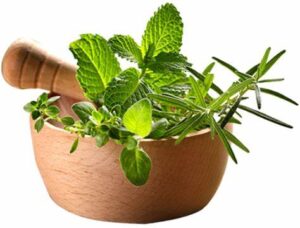Ayurveda Introduction -What is Ayurveda?
Ayurveda is a Sanskrit word and it is compounded as (Ayuha) Life + Vidya (Veda). Ayurveda is believed to have originated from Brahma. Ayurveda and similar disciplines give an idea of the ancient medical knowledge in India. Ayurveda has a broad and rich tradition dating back nearly 3000 years. Treatment methods in Ayurveda focus on herbs, herbal medicines, dietary regimens, various forms of exercise, and thereby enhancing the body’s natural immunity. Today we are going to know Introduction of Ayurveda-What is Ayurveda?-Ayurveda for Beginners.

principles of Ayurveda
Ayurveda principles and medicines are not tested according to the clinical trials method of modern science. Therefore, some people are of the opinion that there is a great need for these actual clinical trials to increase the credibility of Ayurveda. Ayurvedic medicines are especially useful for children. According to Aryuveda, a year is divided into six seasons namely Vasant, Grishma, Varsha, Sharad, Hemanta and Shishir. Ayurveda has very well described how our diet should be according to the changes in the environment during those seasons. This is called Ritucharya.
History
Some references to herbal medicines in Ayurveda are taken from the Atharva Veda, one of the four main Vedas, composed around 1200 BCE. Ayurveda is further described in Atharvaveda. Hence Ayurveda is considered as a sub-veda of Atharvaveda and thus Ayurveda is considered as a component of Atharvaveda. However, many valuable additions were made to Ayurveda, especially during the period of Gautama Buddha and later. Lord Dhanvantari, who emerged from the churning of the sea, is considered the first physician according to Ayurveda tradition. Although Ayurveda is the oldest science, even in today’s age, the treatment based on the principles of this science is useful and successful.

Tradition and Literature
Ayurveda basically has two philosophical traditions which are divine and human. In the Manushi tradition, three different traditions are described in three Samhitas namely Charaka Samhita, Sushruta Samhita, Kashyap Samhita. Among them, Maharishi Charaka and Maharishi Sushruta each founded a tradition, and for many years thereafter, their disciples imbibed and expanded this knowledge. The two texts Charaka Samhita and Sushruta Samhita are summaries of these traditions and therefore these texts were not written by a single author. The third tradition is that of Kasyapa.
These various traditions of Ayurveda span about twelve hundred years. These traditions functioned from the time of Gautama Buddha (circa 556 BCE) to the time of Emperor Harshavardhana (circa 600 CE). But the formal doctrines and tactics of the three branches appear in the original Buddhist literature. Charaka and Sushruta Samhitas have been edited by many people. They have undergone countless revisions over the centuries. Sushruta is believed to have started the tradition of surgery in Ayurveda.
Early Ayurvedic literature was compiled by Vagbhat, who lived in the Sindh province in the seventh century AD. It is called Ashtanga heart. The works of Charaka, Sushruta and Vagbhata are considered to be the basic basis of Ayurveda and hence these three are respectfully known as the Brihad Triad. Then in the eighth century Vaidya Madhav Rishi wrote Nidan Granth which became a standard within a short period of time. These 79 chapters discuss various disorders, their symptoms, causes and complications. After this Bhavprakash and Yogaratnakar books were also produced. With new additions, these three books are still considered standards. They are known as the minor trilogy. Sharangdhar is also a prominent physician who specializes in the process of making various medicines. Ayurveda is included in Brihad Triad, Laghu Triad and Sharangadhar.
Ayurveda mainly uses medicines prepared from plants and their various parts, tubers. After the first millennium, chemical drugs were also used to a lesser extent. Ugraditya in the eighth century AD and Sarangadhara in the fourteenth century AD studied many chemical medicines. Scorpions, snakes, spiders etc. Animal poisons are also used as veterinary medicine. Agadatantra is a branch of Ayurveda that studies poisons.

In the ancient texts of Ayurveda, not only diet is considered, but also how we should live and how we should not live in different seasons, according to time, when there is a change in air and water. So these books and pothyas have volumes from common disorders to rare disorders. Rare pothyas of Ayurveda have been collected by many, Dinesh Vaidya of Nashik being one of them.
Conclusion
In this way, today we have given brief information about Ayurveda. From here onwards we will see information about various principles of Ayurveda, treatment methods, diagnosis methods, Panchakarma types.
Sourse : Wikipidiya
See More
Guidelines and basic principles of Ayurveda
Ayurveda Introduction -What is Ayurveda?
Faq
Question 1
From which words is the word Ayurveda formed?
Question 2
Ayurveda is described in which Veda?
Question 3
What are the three codes of Ayurveda?
No Responses